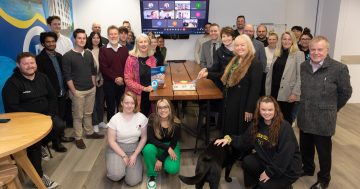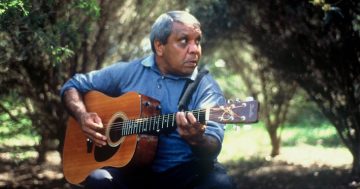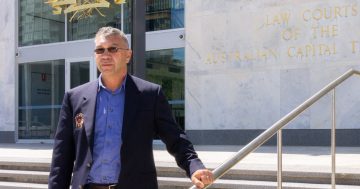
Cara Kirkwood says there is still much work to be done. Photo: Penny Bradford/Auspic.
Mandandanji woman Cara Kirkwood is looking to the future. A future where young First Nations people no longer have to navigate the germ that is racism.
“I’d like to see a generational shift that means our young people no longer have to live with that pervasive feeling of not being good enough to expect the same treatment as non-Indigenous people,” she said.
For Cara, National Aborigines and Islanders Day Observance Committee (NAIDOC) Week triggers a complex mix of emotions.
NAIDOC’s history stretches back to the 1920s when Aboriginal groups moved to increase awareness of their status and treatment.
“When people ask me what’s changed since NAIDOC’s inception, I feel a complex mix of emotions. Yes, there’s been some good work done, but there is still so much more work to do. And a lot of that work is not ours to do.
“We are often having to make people comfortable enough in their own bias to be tentatively willing to lean into the awkward space – the space where change happens.”

NAIDOC flag raising at Legislative Assembly, Constitution Place. Photo: Michelle Kroll.
Ngunnawal-based Cara has almost 15 years’ experience as a national advocate for Aboriginal and Torres Strait Islander people. But if you ask her how being described as an influencer, a person who has helped bridge the education gap between Indigenous and non-Indigenous Australians, sits with her, she’ll tell you – “comically, occasionally awkwardly and always exhaustively”.
As a cultural strategist, Cara has worked all over the country, from Alice Springs to Canberra where she’s been employed at the National Gallery of Australia and the Department of Parliamentary Services within Parliament House.
She was also the first First Nations person appointed to the board of the Art Gallery of South Australia and was recently awarded a coveted Churchill Fellowship.
“It’s easy for First Nations people to have a passion for the arts, culture and creativity,” she says. “We see these three things as an inseparable experience to one’s humanity and broader ecology.
“It’s of no surprise to me that folk find Aboriginal and Torres Strait Islander art compelling, dynamic and perhaps a digestible way to understand 80,000 years’ worth of lived experience on our continent.”
But if you ask her what gets her up in the morning, it will be all about Country. Her Country.
“One of my favourite things about being a First Nations person, a Mandandanji person, is understanding our intrinsic place within the ecology of all things. Our art and creativity, our songs, our stories of salt waters, skies, lands, fresh water and everything in it – our celebrations and our woes exist through the experience of Country.
“This need not be an exclusive experience; in fact, I’m pretty certain the world would be a better place if this work were already understood.”
The theme of NAIDOC Week 2021 is Heal Country.
According to Cara, it’s a call-out to everyone.
“I see it as an invitation to all Australians, visitors and friends, to see themselves as Country. That’s what NAIDOC means to me.”
NAIDOC Week runs from 4 to 11 July 2021. Learn more about ACT events at NAIDOC.





















